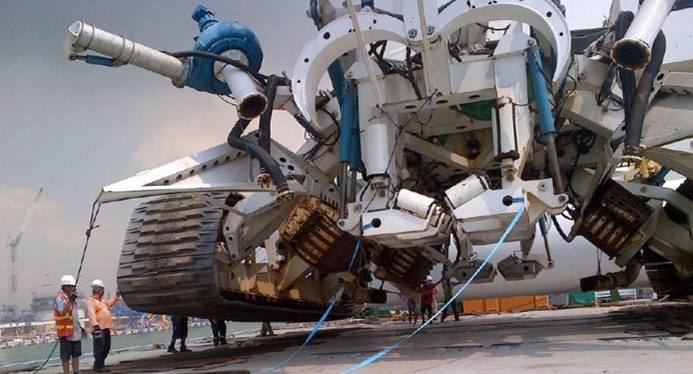 |
 |
||
Deepocean awarded installation contract for Nemo link Interconnector between UK and Belgium |
||||||||||||
Project Description The Nemo Link® interconnector will deliver a 1000 MW electricity link between the UK and Belgium. The link will increase energy security for both countries and support integration of renewable energy. It has been designated as one of the European Commission’s Projects of Common Interest as it will help create an integrated European energy market. Nemo Link® will consist of subsea and underground cables connected to a converter station and an electricity substation in each country, which will allow electricity to flow in either direction between the two countries. The site for the converter station and electricity substation in the UK is a site, formerly occupied by the Richborough Power Station. A similar converter station and substation is being built in the industry zone in Herdersbrug in Bruges, Belgium. Nemo Link® will be the world’s first use of HVDC XLPE cables at 400 kV. DeepOcean’s Scope of Work DeepOcean will execute all marine works associated with the installation and protection of the HVDC bundled cables from the transition joint bay in Kent, UK to the transition joint bay in Zeebrugge, Belgium. The project will be executed over a three year period starting in 2016 with the offshore works completing in 2018. I In addition to the installation and trenching of the bundled cable system, the work scope includes route surveys and engineering, PLGR, out of service cable clearance, pre sweeping in sandwave areas and crossings construction. DeepOcean innovation and technical excellence Cable installation The bundled HVDC cables will be installed by the Maersk Connector, DeepOcean’s new build vessel due for delivery in the first quarter of 2016. This DP2 cable installation vessel is designed to meet the challenges of the interconnector and renewables market. The vessel is capable of grounding out with its seven points mooring system which allows the cable system to be installed without the requirement for a separate shallow water cable lay vessel, thus minimizing the number of cable joints required. The bespoke 7000Te carousel system accommodates bundled installation of high specification cables with no requirement to coil the cables. Trenching The burial of the cables will be undertaken by DeepOcean’s T3200 mechanical and jetting trenching vehicle. This trencher is the world’s most powerful subsea trencher with 3200 HP and will be configured with a single boom cutter and jetting system to protect the cable bundle according to the burial specification. The unrivalled capability of the T3200 trencher allows DeepOcean to meet the requirements for deep burial in challenging ground conditions that could not be achieved with less capable trenching systems. Protection of the cables in water depths of less than 10m willll be undertaken by DeepOcean’s T2 tracked mechanical and jetting vehicle that has an extensive track record of trenching in varying seabed conditions. DeepOcean’s CEO Bart Heijermans commented: “We are very pleased to have the opportunity to support J-Power Systems on this prestigious project with our state of the art installation and trenching systems as well with as our APM certified project management teams. This is the third project we have been awarded for the Maersk Connector. DeepOcean has installed and trenched over 900 km of power cables globally, thus building a proven reputation within the market place. The execution of the Nemo Link® project will further strengthen DeepOcean’s position in the market as an independent leading cable installation and trenching contractor”.
|
||||||||||||
|
||||||||||||
| « Back to all news | ||||||||||||

|
|
 |
|
|
||||||||||||
 Darlington, UK – 9 November 2015 – DeepOcean 1 UK Ltd., a subsidiary of DeepOcean Group Holding BV (DeepOcean), today announces that the company has been awarded a contract by J-Power Systems Corporation, a subsidiary of Sumitomo Electric Industries Ltd., for the provision of all marine works for the Nemo Link Interconnector Project.
Darlington, UK – 9 November 2015 – DeepOcean 1 UK Ltd., a subsidiary of DeepOcean Group Holding BV (DeepOcean), today announces that the company has been awarded a contract by J-Power Systems Corporation, a subsidiary of Sumitomo Electric Industries Ltd., for the provision of all marine works for the Nemo Link Interconnector Project.